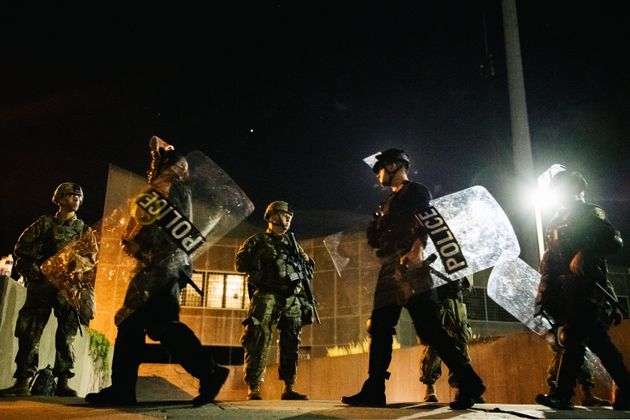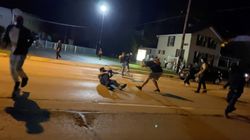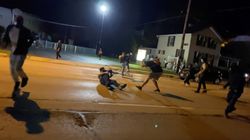
Yesterday, Kyle Rittenhouse, a 17-year-old white man, was charged with two counts of homicide and one attempted homicide after allegedly shooting three people with a rifle in Kenosha, Wisconsin.
He is accused of killing two men – one 26-year-old and one 36-year-old. He was a Trump supporter who was in the front row of a rally in Iowa earlier this year; he supported the pro-police Blue Lives Matter movement, and on the night of the shooting he told journalists it was “his job” to protect Kenosha from protestors who were demonstrating, following the shooting of unarmed Black man Jacob Blake on Sunday by a white police officer.
These are the clearcut facts of the story.
Yet today, as the case has its first court appearance, The Times summarised the above as: “A bullied teenager who revered the police and found purpose as a vigilante appears in court today charged with murder after two people were killed after a night of unrest.”
The framing of the now deleted tweet places Rittenhouse firmly in the role of victim. We are urged to see him as more human and it brings his background into question: a “bullied teenager” who “revered” the police and “found purpose”.
It seems unfathomable that this kind of language would ever be used to describe a Black man accused of murdering two white men.
Equally shocking is the passive way in which the line “Two people were killed” reads does not even make it clear that the “bullied teenager” was the one accused of killing them.
This framing that so encourages us to sympathise with him is minimising of his alleged crimes, and disrespectful to the deceased and their families.
The situation is worse in the US; right-wing Fox News host Tucker Carlson asked viewers: “How shocked are we that 17 year olds with rifles decided they had to maintain order when no one else would?”
Following the shooting of Blake, scores of armed so-called vigilantes took to the streets of Kenosha. Rittenhouse was one of many and had links to the Kenosha guard, a local militia group, and was filmed in videos with them that night.
The framing by Tucker echoes the Trumpian rhetoric that portrays the US as a chaotic unpoliced nation defending vigilantes’ right to keep the country “safe”.
To date, Trump has still not condemned the actions of the militia and his White House adviser Kellyanne Conway told Fox the violence could help his election chances as it would better illustrate “the very clear choice on who’s best on public safety and law and order.”
It’s absurd to imagine media framing of this kind occurring in the inverse situation where the perpetrator was Black, Asian, Arab, or another ethnicity.
Last March, when a white supremacist opened fire at a mosque killing 51 people in Christchurch New Zealand, the Mirror splashed on a picture of the perpetrator as an infant smiling with the caption: “Angelic boy who grew into an evil far-right killer.”
It is difficult to imagine a situation where a brown-skinned terrorist who carried out the largest terror attack in a country’s history would the next day be described as “angelic” on the front page.
When Darren Osborne drove his van into the Finsbury Park Mosque in 2017, The Times’ front page captioned the story as: “Jobless ‘lone wolf’ held over attack on mosque”.
When we talk about white killers we often invoke the “lone wolf”, “troubled loner” stereotype, digging into their background for mental health issues, or family difficulties. There is no immediate link made to the extremist ideology they support. When Osborne entered the mosque he literally said: “I want to kill all Muslims,” yet his attack was still described by some as a “lone wolf” attack, rather than a terrorist attack.
Brown individuals, who aren’t backed by major groups like Isis or Al-Qaeda, who commit murder allegedly in the name of Islamism but aren’t tied to a particular structure, are called terrorists. Often when brown men or foreign men are involved in attacks, people automatically assume terrorism is at play.
Yet, when white men take part in mass shootings based on far-right ideology, their bullying in childhood is often called upon to illustrate their mental health issues. They are treated by the media as individual cases and not as part of a wider systemic problem.
The examples are countless, but the facts are clear: more white people are arrested on suspicion of terrorism than Asian people, and right-wing extremism is the fastest growing terror threat in the UK. Yet, there is a reluctance to change the way we frame terror attacks committed by white people.
Call terrorism what it is: terrorism – do not discriminate based on the perpetrator, and don’t try to invoke sympathy dependent on their race; it is unjustifiable in every single instance.
Maighna Nanu is a freelance journalist.





